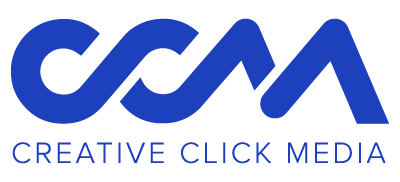PPC Ads: You’ve seen them, you’ve engaged with them, and you might have even made a purchase because of them. That being said, you may not have had any idea that the post you clicked on had a financial stake in you interacting with it to begin with.
PPC stands for pay-per-click, and as the name suggests, these advertisements are a form of marketing in which an advertiser pays a fee each time their ad is clicked. Essentially, this means an advertiser is paying publishers like search engines and social media platforms to promote their ad and drive traffic to their website rather than receiving it organically.
We spend a lot of time talking about the benefits of SEO for generating organic traffic, but PPC ads also provide some incredibly powerful benefits when used strategically.
Here are 6 key statistics to prove it:
1) 75% of consumers say PPC ads make it easier for them to find the information they are looking for.
What this means for businesses: PPC ads are a massively worthwhile investment.
Potentially three quarters of your future customers could find your business through a PPC ad – that’s huge. With this in mind, it’s undeniable that your business should consider allocating a portion of your marketing budget towards PPC advertising. Conduct some research in order to determine where your target audience spends the most time online, and create eye-catching, clickworthy advertisements that will generate the best bang for your buck.
 2) Consumers who visit a website via a PPC ad are 50% more likely to make a purchase than organic visitors.
2) Consumers who visit a website via a PPC ad are 50% more likely to make a purchase than organic visitors.
What this means for businesses: Ecommerce companies especially have a lot at stake when determining whether or not to incorporate PPC into their marketing budget.
A consumer who is willing to interrupt their scrolling to click on an ad they saw on their newsfeed typically isn’t a casual shopper – they’re a motivated shopper. With this in mind, ecommerce businesses should design their PPC ads to make the shopping experience as quick and easy as possible. Make sure your ad links directly to a product page to reduce the amount of time spent searching on your website, and consider including a coupon code or mention of a sale in your ad copy to entice the reader to act in that moment.
 3) PPC ads can increase your brand awareness by 80%.
3) PPC ads can increase your brand awareness by 80%.
What this means for businesses: The brand awareness benefit of PPC ads is just as important as closing a sale, if not more important.
Your potential customers might not be ready to pick up the phone or place an order when they first come across your PPC ad, and that’s okay. When that day comes, they’ll already have a sense of familiarity with your brand, who you are and what you do. This will give your company the leg up over your competitors who lack the same brand awareness you’ve achieved by running PPC ads.
4) 70% of millennial consumers like when they can click on a product in a PPC ad.
What this means for businesses: PPC ads allow you to connect directly with an entire demographic that speaks to the way they effectively consume media.
Depending on the type of business you are operating, millennials could make up a large percentage of your target audience. PPC ads enable you to market to this audience where they spend time online – primarily social media – in a format that speaks to the instantaneous way of shopping we’ve become accustomed to in 2020. Minimize the number of clicks it takes to make a purchase and you’ll maximize your likelihood of closing a sale.
5) 95% of mobile PPC ad clicks come from Google.
What this means for businesses: PPC and SEO go hand in hand.
It almost seems counterintuitive to go the paid route when SEO is all about driving traffic to your website organically, but the two used in tandem can yield some surprisingly powerful results. By targeting relevant keywords through your SEO efforts and buying into more competitive ones through your PPC advertising, you can double your chances of appearing at the top of a user’s Google search. This same data will allow you to tailor your content moving forward based on which PPC ad topics yield the most clicks so you can begin generating that same traffic organically.
 6) 54% of consumers distrust banner ads.
6) 54% of consumers distrust banner ads.
What this means for businesses: It may be time to rethink your perception of what PPC ads are, and what they have the potential to be.
The beauty of this statistic is that it actually works in your favor. Some business owners and consumers alike have a misconception about what PPC ads actually are, envisioning them only as those irritating pop-up ads that can make a seamless browsing experience nearly impossible. Thankfully, PPC ads can be much more discrete while still transparently displaying the fact that they are an advertisement, such as the tiny “Ad” box that appears next to the top results of certain Google searches. This allows you to advertise to your target audience in a way that is not intrusive or disruptive to their browsing behaviors.
Integrating PPC Ads Into Your Marketing Campaign
Now that we’ve covered the benefits of PPC ads, it’s time to think about the payoff. Maybe your SEO efforts haven’t been quite as fruitful as you’d hoped for one reason or another, or perhaps you feel as though your business just isn’t being seen by the audience you strive to reach. No matter the challenge you’re facing, integrating PPC ads into your marketing campaign could provide the boost you need to reach potential customers, establish brand recognition and drive traffic to your website.
The question is, where do you start? That’s where we come in. Our team of digital marketing pros has the know-how needed to identify optimal keywords, craft compelling copy and utilize the ideal platforms to get your ads in front of the audiences who can benefit from them the most. Reach out to us to learn more about how to use PPC ads to your business’ advantage.













